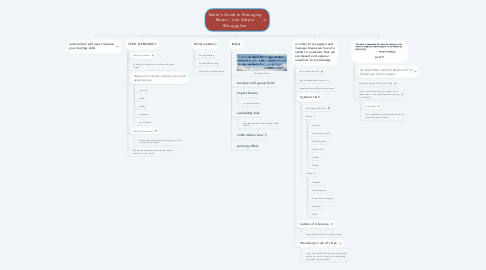Tester's Guide to Managing Biases - Lina Zubyte @buggylina
Door Ania Gajecka


1. automation will never replace your testing skills
2. TECH & PRODUCT
2.1. Youtube problem
2.2. AI acts as a container for collective human culture
2.3. We tend to center/ default to certain experiences
2.3.1. cis-male
2.3.2. white
2.3.3. welthy
2.3.4. American
2.3.5. neurotypical
2.4. The Black Mirror test
2.4.1. what's the most dystopian thing you could do with this product
2.5. We say we represent the user, but do we even know our users?
3. part II
3.1. Six Blind Men and the Elephant: The Challenge of Concussion
3.2. Bias-Busting with Diversity in Data
3.3. if you trust someone in your team more than others - it's a sign that there may be work biases
3.3.1. halo effect
3.3.2. it's a mistake to think that someone you trust makes no mistake
4. Biases
4.1. the titanic effect
4.2. social-proof/ group think
4.3. impact biases
4.3.1. story estimations
4.4. availability bias
4.4.1. we often choose sth we worked with before
4.5. confirmation bias
4.6. priming effect
5. What matters?
5.1. Security testing
5.2. Accessibility testing
5.3. Diverse & Inclusive teams
6. in order to recognize and manage biases we have to admit to ourselves that we are biased and expose ourselves to knowledge
6.1. test: project implicit
6.2. ask for feedback & listen to it
6.3. question yourself & your processes
6.4. Systems 1&2
6.4.1. Thinking fast & Slow
6.4.2. System 1
6.4.2.1. Intuition
6.4.2.2. Involuntary control
6.4.2.3. Effortlessness
6.4.2.4. Innate skills
6.4.2.5. Speed
6.4.2.6. Reflex
6.4.3. System 2
6.4.3.1. Patience
6.4.3.2. Concentration
6.4.3.3. Constructed thoughts
6.4.3.4. Analytics
6.4.3.5. Effort
6.5. ladder of inference
6.5.1. less painful to fall from a lower step
6.6. Weinberg's rule of three
6.6.1. if you can't think of three ways a potential solution could fail, you don't completely understand the problem
